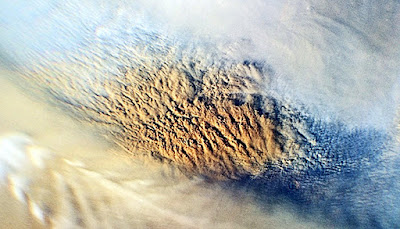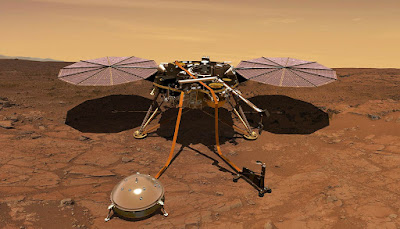DUST STORMS MAY SHED LIGHT ON LIFE ON MARS
Martian dirt tornados, such as the one that eventually closed down the Opportunity wanderer, own the cycle of chlorine from surface to atmosphere and may shed light on the potential for finding life on Mars, inning accordance with new research.
The work improves a previous evaluation of Martian dirt tornados as an important consider the chemical development of the red planet's surface. The new paper shifts focus to the electrochemical processes arising from dirt tornados that may power the movement of chlorine, which is ongoing on Mars today.
"THIS ISN'T LIKE WHAT WE SEE ON EARTH."
judi bola terpercaya karier thiago alcantara
While previously studies have established the fairly high focus of chlorine on Mars and recommended volcanic and hydrological task as historic drivers of the chlorine cycle, Alian Wang, research teacher in the planet and worldly sciences division at Washington College in St. Louis, and collaborators have experimentally revealed how electrostatic discharge (ESD) produced by dirt tornados could play a key role in Mars' surface and atmospheric chemistry currently.
Provided the family member wealth of chlorine at Mars' surface, the scientists set bent on explore the development of this present-day chlorine cycle on Mars: How excited chlorine atoms obtain launched to the atmosphere, after that re-deposited externally, and partly percolated right into the subsurface. They also examined what ramifications that chlorine cycle might have for finding traces of life on Mars.
"In the previous, when problems were various, and there was perhaps more sprinkle on Mars, there would certainly have been a distinction in the surface chemistry and in the habits of chlorine," says coauthor Bradley Jolliff, a teacher of planet and worldly sciences.
"We do not fully understand how Mars reached the present specify of chlorine enrichment at the surface, but we're very interested in knowing, as we pierce down right into the subsurface, how highly oxidized substances of chlorine, called chlorates and perchlorates, communicate with various other aspects. It is been type of a challenge."
In an unique center known as the Worldly Environment and Evaluation Chamber (PEACh), Wang replicated the problems of electrostatic discharge that Martian dirt tornados can cause to develop a deep understanding of surface-atmosphere chemical communication.
Her outcomes were considerable. Not just are the chlorine substances seen on the Martian surface oxidized by electrostatic discharge throughout dirt tornados, but those dirt tornados also are producing many free radicals from Martian atmospheric particles. That triggered the excited chlorine bits to be launched, recombined, and after that removaled in between the surface and the atmosphere of Mars, developing an energetic and ongoing chlorine cycle.
"This isn't such as what we see on Planet," Wang says. "Photochemical responses, owned by the sunlight, occur on both planets, but on Mars we have these global dirt tornados once each 2 Martian years, local dirt tornados each year and countless dirt evil ones everywhere."



